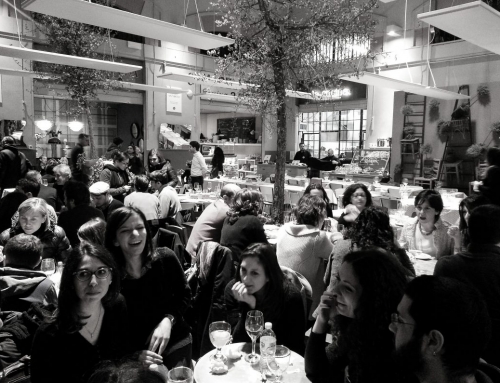Aceto balsamico – what a strange name for a vinegar, don’t you think?
A very expensive luxury food today, aceto balsamico was originally used for medical purpose, specifically to help with digestion – and it was one of the few tasty medicines at that time. Yet it wasn’t created by pharmacists; it wasn’t invented at all. The existence of aceto balsamico goes back to a forgotten barrel of cooked grape must at the Duke’s Palace in Modena – the grape must fermented due to the special climate of the area into a thick, sweet vinegar, which is a natural digestive.
The history of aceto balsamico di tradizione di Modena
From the 17th century on, the noble families of Modena started to use a part of the grape harvest to produce the so called “black gold”, the know-how was passed on from generation to generation – in fact, it was the nonna (grandma), who was the key holder, quite the opposite of today, with men now dominating the field.
The quality of the must and location are two essential factors. Only in the area around Modena do you find hot summers that contrast with cold winters and a high concentration of microbacteria (acetobatteri), which are responsible for the fermantation process. During the warm months, chemical transformation processes are favored, whereas the aceto “sleeps” in winter; this seasonal change of temperature is important for the aging process. The barrels have to be exposed to the temperatures, but protected from rain (they need to be open to allow air exchange), so the ideal place to store them, is the attic.
During the centuries, the producing families figured out which grapes work best, what is the perfect cooking temperature and duration, and how long the must should be stored. They improved the process continuously up until the rules were fixed by the Consortium of Aceto Balsamico di tradizione di Modena. In former times only the noble families were able to produce balsamic vinegar since they owned vineyards and palazzi with attics, big enough to store the barrels. The balsamico has to age at least 12 years, so you can imagine what kind of space is needed.
During the 17th and 18th century, the vinegar mostly stayed in the area and was only given as a present to members of the nobility, but with rising student numbers at Bologna’s university – many of whom were of noble decent themselves – the “black gold” got better and better known among European noble families. Whereas the original still is very expensive (45 euro per 100 ml) and produced in very small batches, you find a cheap copy in every supermarket – industrial produced wine vinegar with syrup.
Today, more and more families in the Modena area produce the original aceto balsamico di tradizione; it’s a way to create a kind of immortality, something that lasts for generations.
The production facilities can be visited during our culinary factory tour, we take you to the Acetaia dei Bago and Patrizia and Diego explain the process, show you around and let you taste the black gold from Modena – a perfect opportunity to get a glimpse into the daily life of an acetaia.






